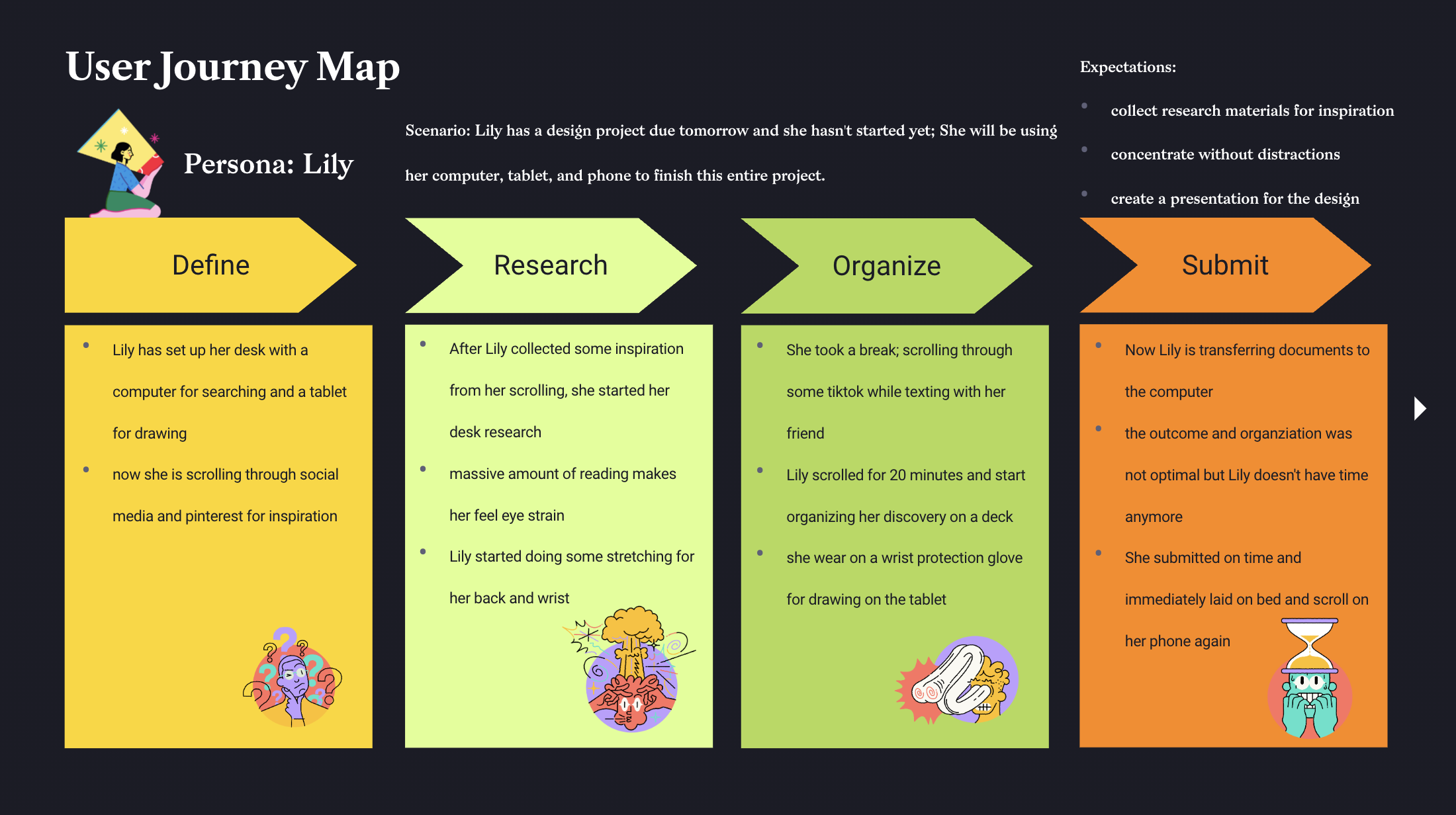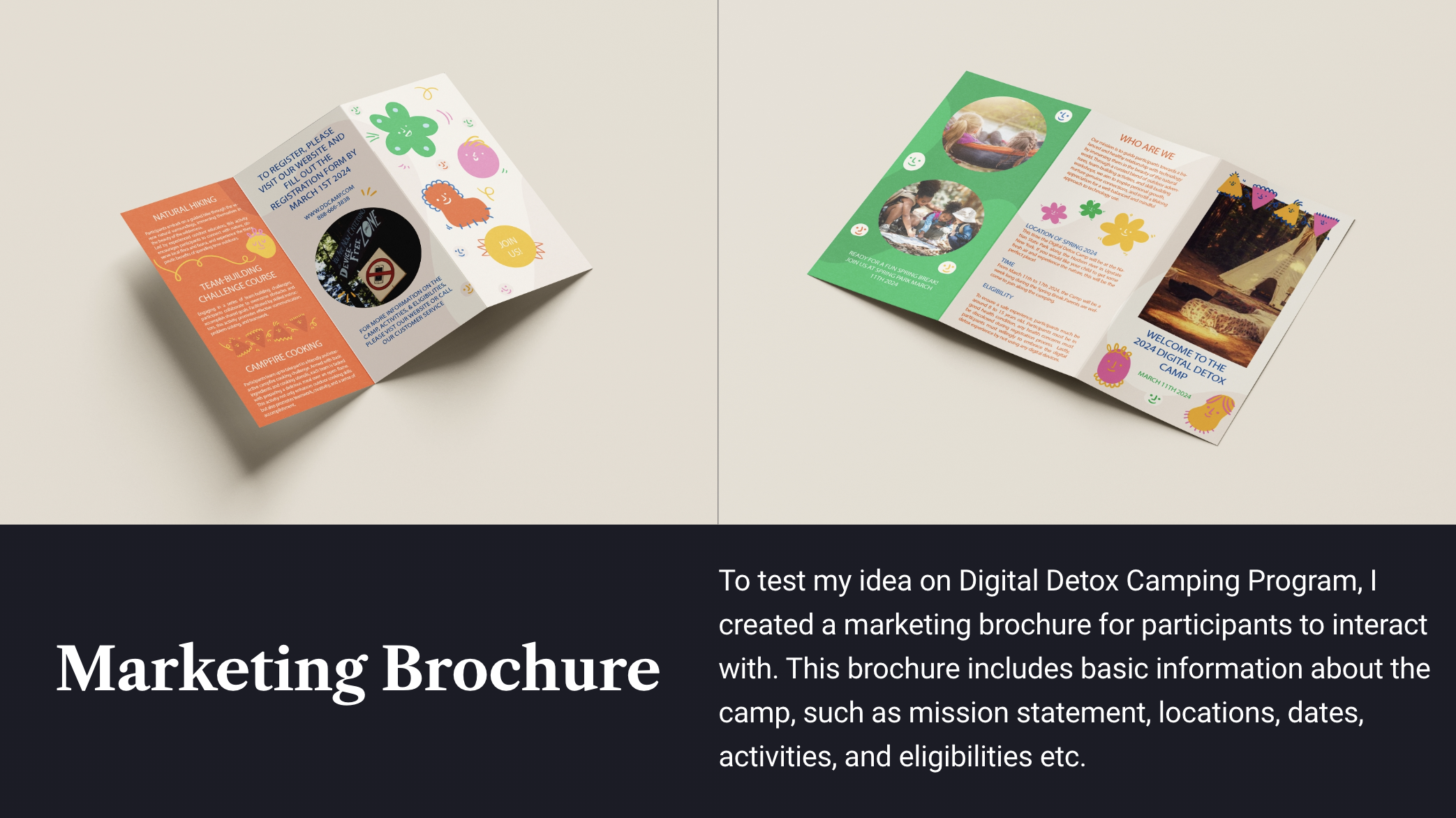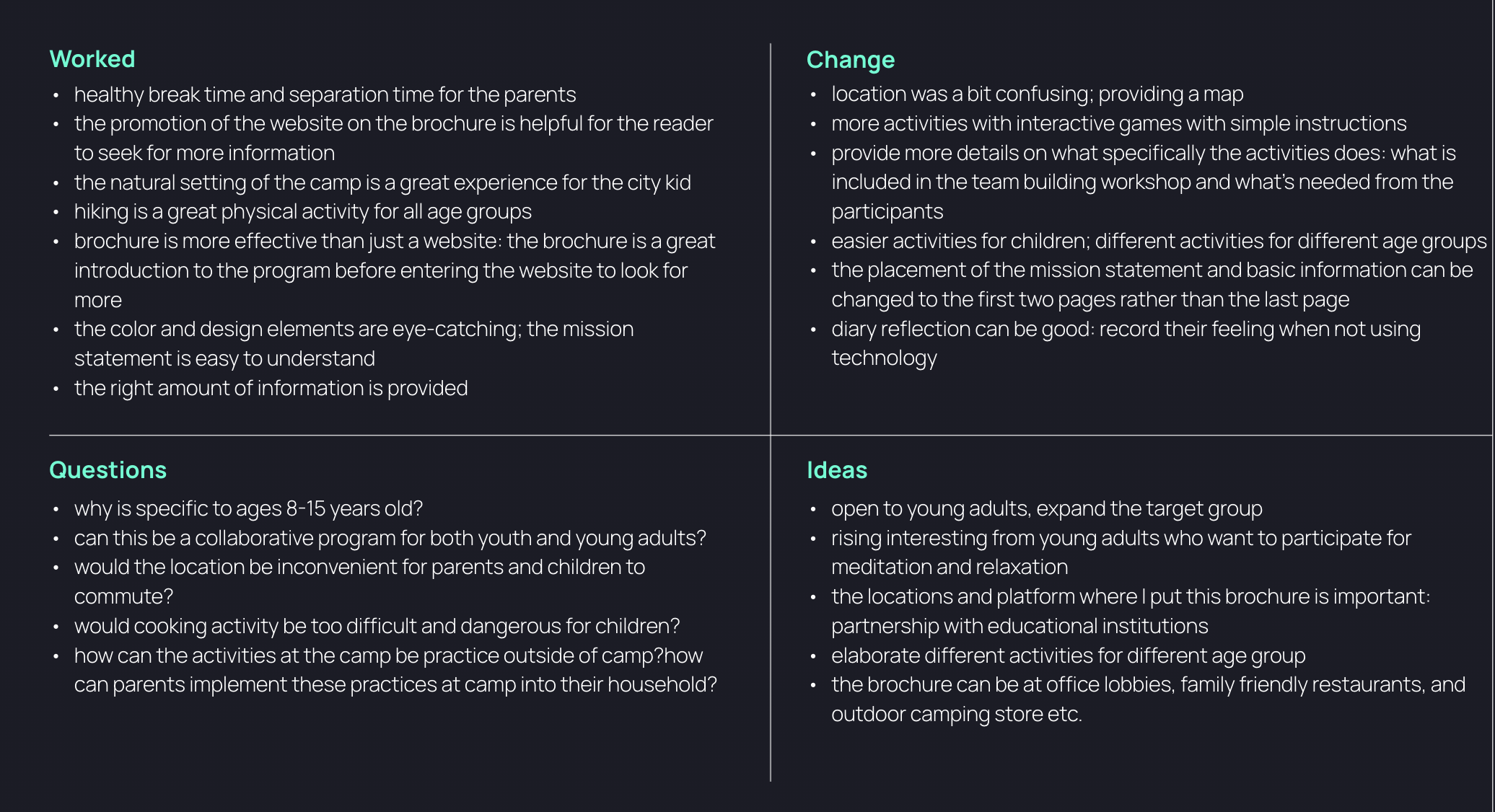
Skills
UX research, persona, interview, cultural probes, data analyzation
Team
Solo
School project
Role
UX research
User Testing
Duration
13 weeks
Digital Detox Camp is a technology-free program designed to help children and youth disconnect from their screens and engage in offline activities.
Growing up in this generation, we adopt technology in our daily lives since we were children. Since the late 20th century, television has appeared in many households and gradually children spent more time in home watching TV rather than going outside. We use phones to communicate with family and friends and computers to learn and study in school. They were meant to be tools for our lives but it also operates as toys for entertainment.
This makes me wonder—Do we have the choice to not live with technology or is it too convenient to disregard the potential harm?
Therefore, I want to understand the impact of technology on our physical and mental health and the continuous habits we persist from the use of technology.
Topic Development
During my process of desk research, I discovered some surprising correlations between technology and children development. It was interesting to see how outdoor activities and engagement with nature can bring enormous benefits to children’s development; thus I'm curious how technology will change the way children adapt information and socially engage with others.
Problem Statement
Long-term excessive technology consumption is harming young adults' physical health and decreasing concentration abilities, the increasing prevalence of technology-based lifestyle is fostering unhealthy habits.
Key Objectives & Research Planning
Identify the risks and benefits of youth using technology
Learn about the habits people embrace from the use of technology
Learn about people’s experiences with technology growing up
Identify mental health issues relating to playing with technology
Identify physical health issues relating to playing with technology
Understand the key factors people consider when adopting technology into their daily lives
Research Method #01: Interviews
I was able to interview four participants in total from different age groups (two in-person and two online). Two young adults (Gen Z), one youth (Gen Alpha), and one parent (millennials), share different perspectives and experiences on technology growing up and have raised concerns for the future generation.
# of participants
4
Age Group
14-35
Target Audience
Young Adults and Parents
Post it notes for insights
112
I don't think 4 and 5 years old should be watching YouTube and playing games, there should be more educational technology for them"
Interview quote, youth
"I try not to get my eyes too tired, if I do, I will buy a lot of eye drops."
Interview quote, young adult 2
“I definitely use technology leisurely a lot, probably more than I should, but it's mostly for school, around 75% are for research and school."
Interview quote, young adult 1
I don't know what to do, the flashlights from the TV, phone, and computer stimulate him and catch his attention naturally"
Interview quote, parent
Research Method #02: Diary Study
I asked two participants (different from my interviewees) to participate in this diary study. I print out my prompts with instructions on what to write each day. The diary collected both qualitative and quantitative data. It was conducted for 4 days
# of days
4 (weekdays and weekends)
format
physical copy-hand written
# of participants
2
Age Group
18-24




through the diary study, I was able to see more negative effects and harm on the participant's brain and body through an unintentional and intuitive setting. the participants were surprised by their screen time.
Research Method #03: Observation
After collecting informative data from interview and diary study, I want to observe people of all ages (18-65) learn about people's habits with technology in a natural setting and how different generations incorporate technology into their life
participants of all ages (18-65)
how different generations incorporate technology into their life
learn about people's habits with technology in a natural setting
Key Findings
When people are by themselves in public, they tend to spend more time on their phone
when people are with another individual in public, young adults communicate while looking at their phone and elderlies communicate while looking at each other's eye
When young adults read in public, they pick up their phone every 2-3 minutes, while middle-aged adults shows longer concentration span
Insights: Affinity Mapping
Excessive screen time at a young age is hindering real-world social skills, and the prevalence of technology leads to challenges in communication
Young adults' dependency on technology, leads to time-wasting rather than improved efficiency
Excessive technology use has contributed to eyesight issues and constant body pain, demonstrating severe exhaustion in our physical and mental health
Caretakers and Parents think excessive use of technology by young children leads to loss of meaningful human connections
There are positive value of technology in enhancing learning experiences and skill development
The gradual introduction of technology and balanced interactions and restrictions are key elements in shaping a child's relationship with technology
By refining my Opportunity Areas, I came up with this Question
How might we educate children and youth about the dangers of using technology before they form unhealthy habits?
Solution:Digital Detox Camping Program
Prototype Testing
Moving Forward…
-
focus on short-term goals: learn more about the target audience, modify the program according to different age groups and different levels of intensity
collaborate with education institutions, implement practices from camp to school
Understand how to stay resilient and keep the participants to stay in the program
-
It's important for me to understand that DDC is not more profit making, but for the participant's health and well being
User Growth: behavioral improvements or changes in participants
increasing # of return participants
positive feedback from parents
-
This exercise was very interesting in terms of participants' shift in attitude after seeing the future. Most reactions from my prototyping testing were exciting, positive, engaging, and willing to participate in this program.
But shifting from the current to the future, people raise concerns and think it's impossible to bring such a positive impact due to the current development of technology in our society.
However, participants seek more potential for children and youth and think early implementation can lead to better results in forming habits. This exercise makes me question its long-term effectiveness (maybe the duration of the camp should be shorter (weekends, 2-3 days) rather than month long break), but also encourages me to focus on my targeting group on younger population for better results.





















